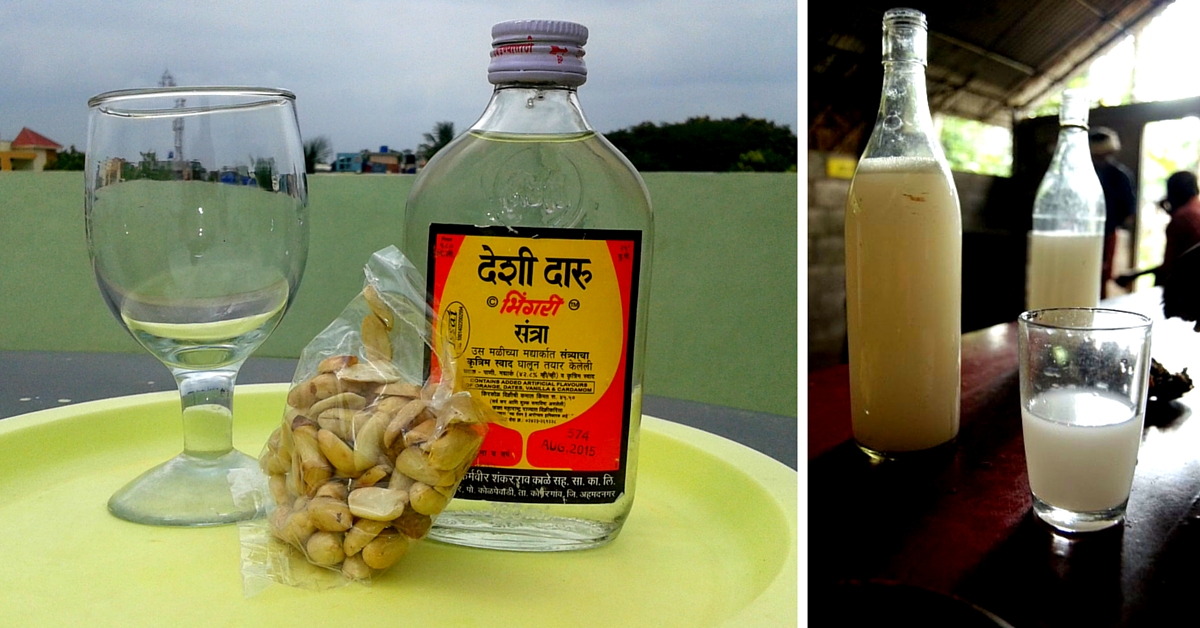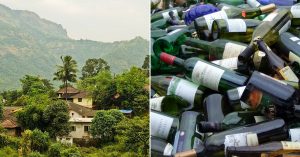Fighting Illicit Liquor Trade: Bihar Bans Alcohol While AP Pushes for Sale of Alcohol in Tetra Paks
While the ban of alcohol in Bihar and the boost of tetra pak alcohol sales in Andhra Pradesh might seem contradictory, they're in fact aimed at one goal: reducing consumption of illicit liquor.

On April 5, Bihar’s Chief Minister Nitish Kumar announced the complete ban of alcohol in the state, four days after banning country liquor, a sudden decision that shocked bar owners. The third largest consumer of alcohol in India, Bihar becomes the fourth state to be alcohol-free. Prohibition was enforced in Kerala, Gujarat, and Nagaland, with some parts of Assam too.
Alcohol ban in India is mostly targeted towards reducing its ill effects on the health of drinkers. While this can include all kinds of liquor, the aim is to eliminate homemade liquor such as arrack, toddy and other locally brewed alcohol.
Homemade liquor (or desi daru or country liquor) is produced and consumed within India. It is cheap, easy to produce (from any fruit that has a high sugar content), and consumed by large parts of the Indian population. According to this The Hindu article on India’s drinkers, the most popular drink in rural areas was toddy (followed by country liquor), whereas it was country liquor in urban areas.
Country liquor is highly likely to be adulterated, or brewed wrongly.

Source: Wikimedia Commons
When alcohol is being distilled, a certain temperature has to be maintained; crossing that line leads to formation of methanol, which is fatal to consume. Some illicit brewers also add methyl or battery acid to give an extra punch. This was the main cause of all the hooch-related tragedies in India so far, from the 176 people who died in West Bengal to the 100 dead in Mumbai.
In Gujarat, the ban on alcohol has been effective since 1960, but was enforced with new rigour in 2009 after the hooch tragedy that killed more than a hundred people that year. In 2014, Kerala CM Oomen Chandy announced a phased manner of alcohol ban. While alcohol was banned in small-time bars and their licenses revoked, tipplers could still go to four or five star hotels for a drink. The Nagaland ban was imposed in 1991, but recent reports state that there are quite a few illegal setups for selling alcohol. In Lakshadweep too, there is a complete ban. In Tamil Nadu, banning alcohol has been a political issue since 1971. The state has alternated between dry spells and flourishing legal liquor trade every time the government changed.
However, the presence of bootleggers makes all these bans ineffective.
High prices of Indian-made Foreign Liquor (IMFL) brands often forces the lower-income population to go for illicit hooch.

Source: Wikimedia Commons
Country liquor is available to drinkers at as low as Rs 20 for 180 millilitres in some places, while a 90 millilitre shot of legally sold alcohol with taxes costs something around Rs 80.
This reason alone was enough for many states to repeal their prohibition rules. For instance, Andhra Pradesh had a complete ban in place from 1992, which was recalled in 1997 because of the illicit underground liquor market and corresponding losses in state revenue. Similarly, Mizoram banned liquor in 1997, but in 2007 allowed for production of wine from guavas and apples with a certain percentage of alcohol content. To prevent people from consuming illicit liquor, the ban was lifted in 2014.
But in a new initiative to combat this problem of illegal and adulterated hooch, Andhra Pradesh has boosted sales of alcohol in tetra paks.
Claiming that this move could reduce adulteration of alcohol, the tetra paks are sold at low prices, aimed at those in the lower economic rung of the state. Called Navodayam, the government has fixed the price at Rs 45 for 180 milliliters of IMFL.
While it wasn’t successful in 2013, when it was first introduced, the government is pushing for sales through incentives. In a quote to Times of India, Andhra Pradesh excise commissioner MK Meena pointed out that while adulteration is almost impossible in tetra paks, the distribution is also made easier. “Normally, we charge a fee for second and third shift production based on the volume. As the Tetra Pak equipment costs more than the traditional bottling plant, we are offering the incentive,” she said.
Uttar Pradesh and West Bengal also approved a similar plan in July 2015, while this initiative has been in place in Karnataka since 2010. It has been quite a success in Karnataka, where arrack has been banned since 2007. Within three years of its implementation, sales of tetra pak alcohol went up to 44% from 14%, with more than 25 brands using this packaging, according to TOI.
Whether it’s banning alcohol completely or promoting sales of good quality liquor, it could prevent people from drinking cheap adulterated liquor, which is perhaps more deadly than regular alcohol.

Source: Flickr
Like this story? Or have something to share? Write to us: [email protected], or connect with us on Facebook and Twitter (@thebetterindia).
If you found our stories insightful, informative, or even just enjoyable, we invite you to consider making a voluntary payment to support the work we do at The Better India. Your contribution helps us continue producing quality content that educates, inspires, and drives positive change.
Choose one of the payment options below for your contribution-
By paying for the stories you value, you directly contribute to sustaining our efforts focused on making a difference in the world. Together, let's ensure that impactful stories continue to be told and shared, enriching lives and communities alike.
Thank you for your support. Here are some frequently asked questions you might find helpful to know why you are contributing?


This story made me
-
97
-
121
-
89
-
167














